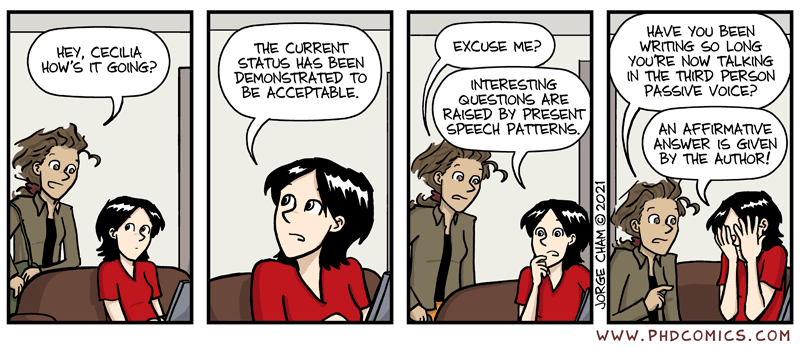Quick Separable Verb Lesson
Separable verbs don’t need hyphens.

She got the verb wrong. Should be “seek out.”
The compound adjective is good, though: “half-dollar.”
End of lesson.
Subscribe to this blog's RSS feed
You can Make About any Noun into a Verb
For Example:

You don’t even need to put it between quotes.
Can you think of a noun that you can’t use as a verb?
A Good Example of Bad Writing
The clue is at the top of the fourth panel.

As you know if you read this site much, you should avoid passive voice like the plague! (I almost wrote “Passive voice should be avoided.” Shame on me.) And using the third person makes it worse!
Another Hyphen Lesson
First, let’s look at the comic, specifically the words “to do.” How correct are these, and why?

Okay, the answers:
- Panel 1: Let’s don’t call it a little dash. Call it a hyphen.
- Panel 2: Here “to-do” is a compound noun. The hyphen is okay. (I think she’s using “to-do’s” as an activity, not as punctuation.)
- Panel 3: Here he’s using it as a verb. Should not have a hyphen.
- Final panel: Here “to-do” is a compound adjective. Hyphen is correct.
How did you do?
Another Comma Lesson
If you read this blog much, you have heard about the oxford comma (if not, look for it in the search box on the right), the comma before the conjunction in a list. I encourage you to use it. My rule is that without that comma you can sometimes be misunderstood; but with it, you will not be misunderstood.
The rule applies even if you don’t use the conjunction at the end. Maybe I should say especially if you don’t use the conjunction at the end. This list contains only two items, but you get the point.
So use the oxford comma!

